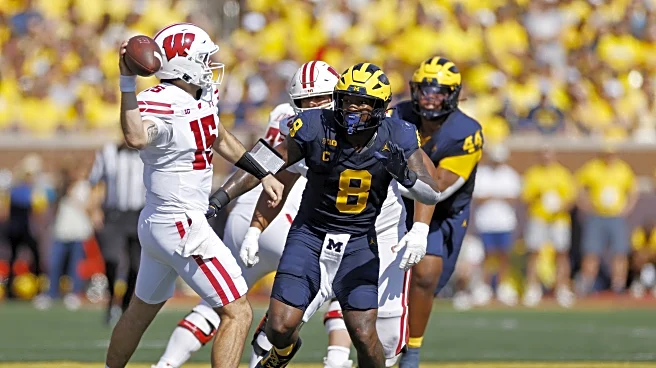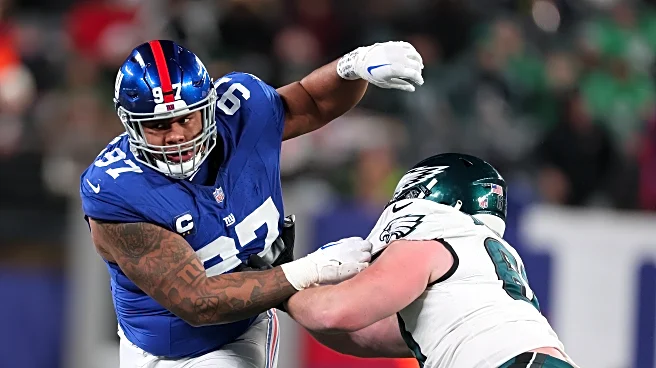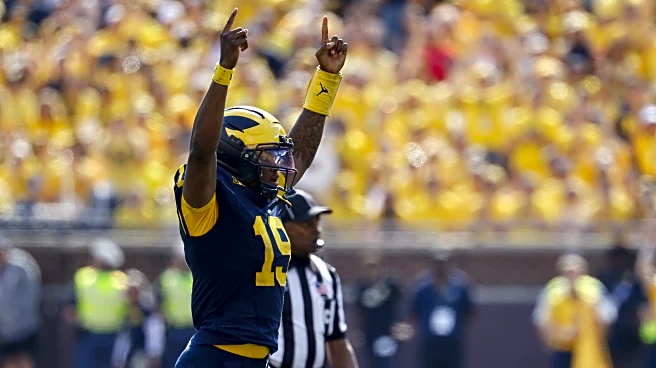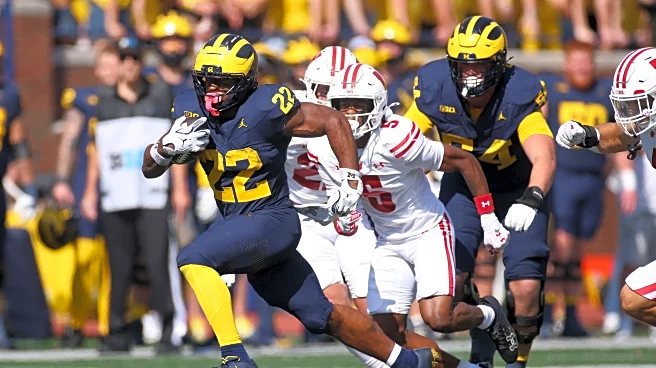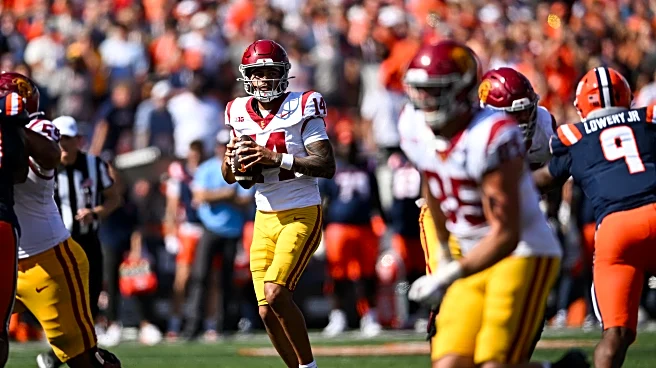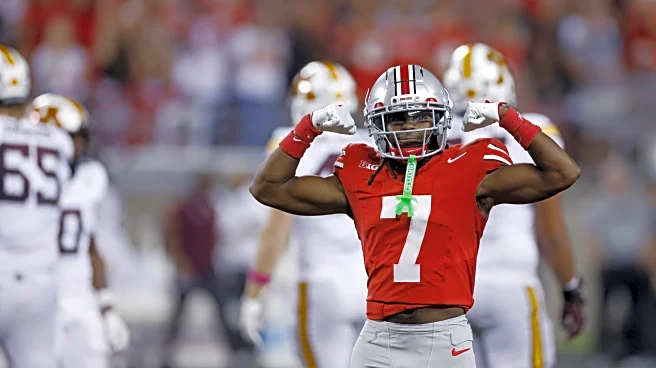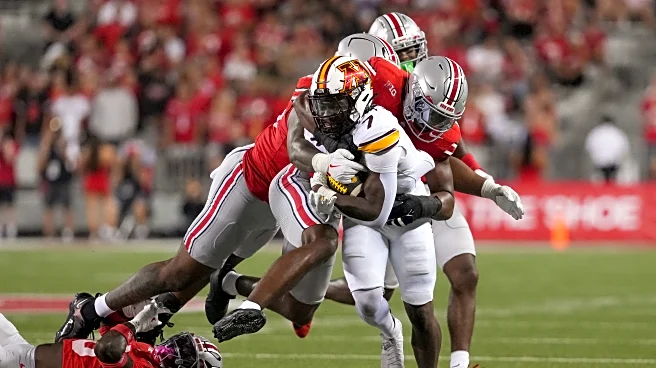What's Happening?
Jahkeem Stewart, a freshman defensive tackle at USC, is making significant waves in the college football scene. Known for his exceptional size and strength, Stewart has been recognized as a generational prospect. His journey began in New Orleans, where he trained under Clyde Alexander, who helped him develop his skills from a young age. Despite facing challenges such as transfer rules that limited his high school varsity play, Stewart's talent was undeniable. He amassed impressive stats during his sophomore year at St. Augustine, with 85 tackles and 20 sacks. Stewart's decision to reclassify and join USC early has already shown glimpses of his extraordinary potential, with coaches and teammates praising his football IQ and pass-rush skills.
Why It's Important?
Stewart's rise is significant for USC and the broader college football landscape. His presence on the team enhances USC's defensive capabilities, potentially leading to improved performance in upcoming seasons. As a generational talent, Stewart's development could attract more attention to USC's football program, influencing recruitment and team dynamics. His story also highlights the importance of nurturing young talent and the impact of mentorship in sports. Stewart's journey from a young athlete in New Orleans to a promising college player underscores the potential for transformative growth in sports through dedicated training and support.
What's Next?
As Stewart continues to develop at USC, his performance will be closely watched by scouts and coaches. His potential to become a standout player in college football could lead to future opportunities in professional leagues. USC's coaching staff will likely focus on refining his skills and integrating him further into the team's strategies. Stewart's progress may also influence USC's recruitment strategies, as they seek to attract other high-caliber athletes. The broader college football community will be interested in how Stewart's presence impacts USC's performance in upcoming games and seasons.
Beyond the Headlines
Stewart's journey raises questions about the role of early specialization and professional training in sports. His decision to reclassify and focus on training rather than traditional high school play challenges conventional paths to college athletics. This approach may inspire other young athletes to consider alternative routes to success, emphasizing the importance of tailored development programs. Additionally, Stewart's story highlights the cultural and community aspects of sports, showcasing how local mentorship and support can propel athletes to national prominence.

